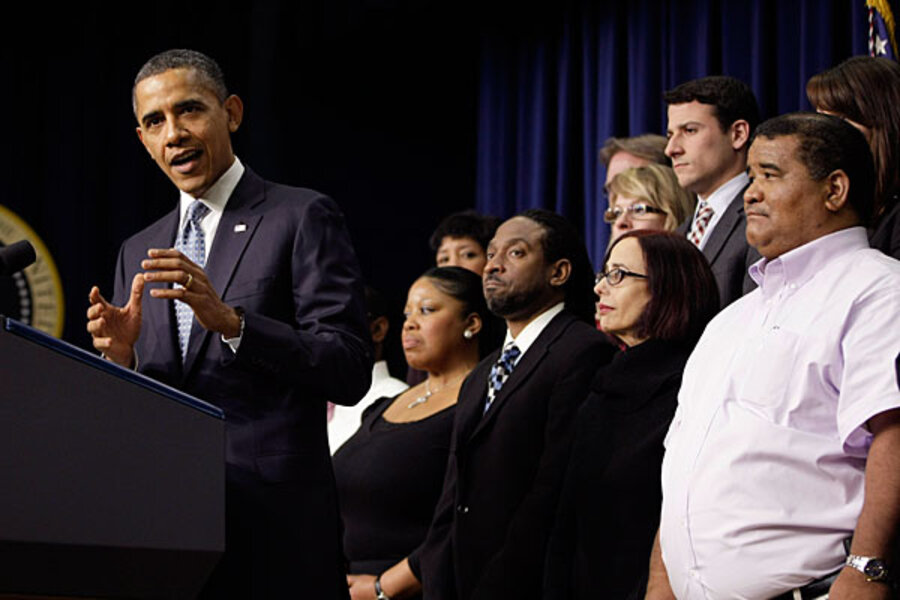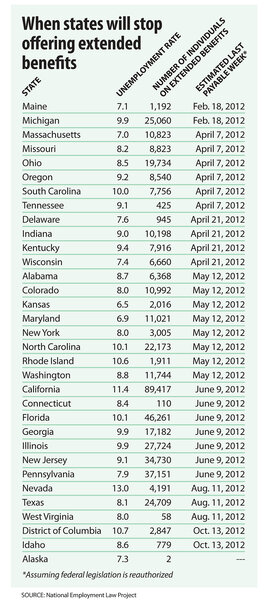Unemployment benefits 101: When will your state cut off extended benefits?
Loading...
| New York
For some long-term unemployed, news that congressional negotiators have worked out a deal to extend long-term unemployment benefits through the end of the year will be less significant than it appears.
Regardless of Tuesday's agreement on Capitol Hill, many states are set to pare back extended benefits well before the end of the year, due to the formulas by which they determine benefits.
In short, state formulas say that extended unemployment benefits – those that currently take effect after 79 weeks of unemployment – will only be offered if state unemployment is 10 percent higher than it was in the same quarter any time in the past three years.
Congressional negotiators could have changed this, extending the look-back period to four years – when the unemployment rate was much lower. They decided not to do so.
Many states had already eliminated paying extended benefits of up to 99 weeks because their unemployment rate had dipped below the required threshold. On Saturday, two more states – Maine and Michigan – will stop paying extended benefits. By the end of June, 25 more states will be eliminating the 99 weeks of benefits.
By the end of the year, if Congress approves the deal, the states with the highest unemployment rates will be capping their benefits at 73 weeks.
The National Employment Law Project puts the number of people on extended benefits at 512,463.
For a complete list of when states will stop offering extended unemployment benefits when, click on the chart above and to the left.






